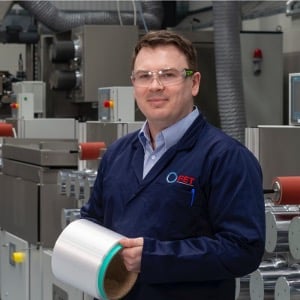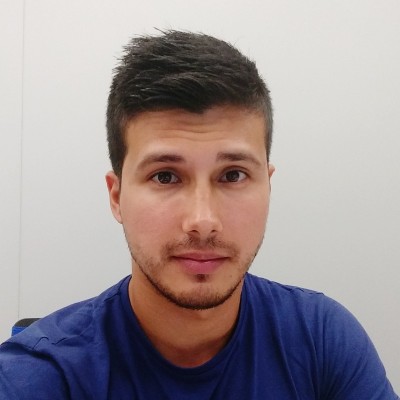This website uses cookies so that we can provide you with the best user experience possible. Cookie information is stored in your browser and performs functions such as recognising you when you return to our website and helping our team to understand which sections of the website you find most interesting and useful.

Fibre Technologies Platform Showcase
Overview
Fibre Technologies capability delivered through Royce brings together cutting edge equipment and expertise to enable innovative research in areas such as biomedical materials and composites based on 2D Nanomaterials.
The easy to access and technically supported facilities in the Fibre Technologies platform provide capability to fabricate polymer and composite fibres for applications such as separation and filtration, batteries or hydrogen storage and biomedical devices. The platform is open to academia and industry and supports the acceleration of their exploitation in the smart textiles, aerospace, automotive and health sectors.
The first Henry Royce Institute ‘Fibre Technology Platform Showcase’ will introduce Royce equipment and capabilities to a wide audience, including both academia and industry.
The event will feature talks from academics and industrial providers related to fibre technology research and development (i.e. commercial delivery/production and case studies of academic innovation). This will be followed by a facilities tour – including wet and melt spinning lines, the nanofibers to devices suite with pilot-scale production capability and melt-electrospinning.
Speakers
Dr Elif Ozden Yenigun

Title:
Embracing Soft Textiles Approach in Engineered Applications
Abstract: This talk provides an overview of Dr Elif Ozden Yenigun’s research group and the Soft Systems Research Group at the Royal College of Art. The research tackles new spinning solutions and novel design and making tools for the applications crossed over with textiles. In mindfulness of the material world, Dr Yenigun will exemplify how the team brings up new solutions for sustainable electronics in textile design and hacks/re-creates textiles tools for engineered applications. The talk will also tap into both experimental and computational methodologies to understand molecular interactions for composite fibre melt and wet spinning in an attempt to manipulate textile hierarchy at different length scales.
Bio: Dr Elif Ozden Yenigun is a material scientist interested in nanoengineered textiles, smart wearables, and novel 3D textile composites. Her research focuses on developing cutting-edge textile-based materials, that enable the design of more novel and innovative engineered soft systems, surfaces and products. Her research philosophy rests on the idea of facilitating and co-creating “inter/trans-disciplinary” domains through the transaction of scientific knowledge into different disciplines and diverse communities. She has been active in multi-disciplinary research in the last 15 years and involved in various roles to support learning in higher education and engaged with the industry and creative sectors. She has contributed to secure £1.5M funding from research councils, and several industrial partners and consistently contributed to numerous high-quality and impactful research papers in journal articles and peer-reviewed conference proceedings.
Dr Luke Burke

Title:
Handheld electrospinning for in-situ fabrication and deposition of nanofibrous nonwovens
Abstract: The technique of “electrospinning” is well established for the manufacture of fibres with diameters on the micron, sub-micron, and nano scale. The technique utilises a high voltage, usually between 4 and 30 kilovolts to create a whipping jet of polymer, resulting in rapid drying and stretching of the jet from a millimetre-scale nozzle to the fibre sizes desired. This jet is deposited on a collector substrate which may have a particular geometry to build up a shaped, non-woven, highly porous polymer material over several minutes or hours. These materials may then be removed for use in applications such as tissue engineering, regenerative medicine, filtration, in-vitro cellular scaffold materials, and others.
Despite electrospinning being widely used in academic and commercial settings over the last 30 years, significant issues remain in the robustness and cost-effectiveness of the technique. Minor changes to carefully controlled environments can disrupt the performance of the whipping jet, and collection, characterisation and sterilisation of the nanostructured materials frequently leads to significant value-loss in production settings. Finally, although the electrospun materials produced have been demonstrated in commercial settings to provide advantageous properties, their application in many scenarios is identical to lower-tech solutions, resulting in damage to the materials or poor user experience.
Corryn Biotechnologies (www.corryn.co.uk) has developed a novel approach to electrospinning via a handheld device – developed around our novel intellectual property protected via UKIPO and PCT filings. Our applicator can deliver a range of materials contained with Corryn’s proprietary cartridges, with a focus on dressing of chronic and complex wounds. With Corryn’s system, no technical electrospinning expertise is required as our applicator recognises loaded cartridges and sets all processing parameters accordingly. With our existing materials library we can provide platforms to deliver active ingredients in instant-release, 14-day breakdown, and semi-permanent polymer nanofibrous nonwovens.
Bio: Dr Luke Burke achieved his PhD in Electrospinning for Tissue Engineering and Regenerative Medicine in 2016. Since then, he has worked for some of the most successful tissue engineering start-up companies in Europe, as well as multinational medical device organizations. In 2021, Luke founded Corryn Biotechnologies to bring his concept of a hand-held, user-friendly electrospinning device to the market to address clinical challenges in chronic and complex wound dressings. To date, Corryn’s work has received significant private equity investment along with Innovate UK, EPSRC and Royal Academy of Engineering grant support, and grown to a small R&D firm with 4 employees in both the United Kingdom and United States.
Professor Felicity Rose

Title:
Fibrous materials for mammalian cell culture
Abstract: Cell based therapies offer potentially revolutionary regenerative medicine-based treatments for a number of diseases but are dependent on the culture, supply and delivery of defined cell types in appropriate numbers and without loss of phenotype. This requires biomaterials development to offer new substrates for mammalian cell culture in 3D and new scaffolds that can be used to either deliver therapeutic cells without loss of function or to simulate cells present in the local microenvironment towards effective tissue formation. To achieve these aims, we have developed a number of biomaterials fabrication strategies at Nottingham including those based on electrospinning. This talk will provide an overview of the work conducted at Nottingham for a number of different applications within the regenerative medicine field.
Bio: Felicity Rose is Professor of Biomaterials and Tissue Engineering and Director for Research and Knowledge Exchange, School of Pharmacy (Faculty of Science) at Nottingham. With an established reputation in the UK and internationally as one of the research leaders in regenerative medicine, she is co-lead of the largest network of research funding in biomaterials development within the UK. This includes two Engineering and Physical Sciences Research Council (EPSRC) programme grants and more recently, an EPSRC Programme Grant ‘Dialling up Performance for On Demand Manufacturing’, led by Prof Ricky Wildman. She is deputy director of the UK Regenerative Medicine Platform (UKRMP2) smart materials hub led by Prof Molly Stevens at Imperial College London. She has an established track record through publication in high impact journals including PNAS, Advanced Materials and Biomaterials. Felicity is a leader in the tissue engineering community through the Tissue and Cell Engineering Society (TCES – elected committee member), the Scientific Advisory Committee for the TERMis World Congress 2021, and she chairs the EPSRC Centre for Doctoral Training Strategic Advisory Board in Advanced Biomedical Materials led by the University of Manchester.
Dr Jonathan Hunter

Title:
Spinning a good yarn: a look inside Fibre Extrusion Technology
Abstract: FET Ltd. is a UK based manufacturer of melt and wet spinning systems. Alongside this, FET has a Fibre Development Centre, which focuses on supporting customers in establishing processes for the production of novel fibres – from synthetic and natural polymers.
Over the past 25 years, FET has supported an array of clients across universities and industry, both domestic and international. In our presentation, we will discuss a few examples of these projects, which have had a strong sustainability focus. These projects cover the topics of: a yarn loaded with an insecticide (functional textile), a recycled polymer yarn (composite) and a medical grade nonwoven. Through these efforts, we will demonstrate FET’s skill in process optimisation pertaining to: process & material selection, thermal & mechanical parameters and blend composition.
Bio: Dr Jonathan Hunter studied Medicinal and Biological Chemistry at the Nottingham, followed by a PhD in Sustainable Chemistry at the same institute. Jonathan was awarded several excellence awards, including winning the Takeda Prize three times. Following the completion of his PhD, he has worked in a number of sectors including medical device manufacturing, FMCG, cosmetics and pharmaceuticals. In early 2023, he was appointed as Research and Development Manager at FET where he leads a team of scientists and engineers researching into the use of polymer extrusion for spinning novel yarns. These yarns are used across multiple industries including: aerospace, medical device, high fashion, sportswear and packaging.
Dr Matei Cirstea

Title:
Electrospinning of Medical Devices: From the Lab to the Clinic
Abstract: This talk will showcase The Electrospinning Company’s 13 years of experience in working with out partners and translating ideas and device concepts into clinical medical devices. Case studies will be presented which highlight the journey of various fibrous, electrospun parts from design and development all the way into clinical trials and the market.
Bio: Dr Matei Cirstea is a Senior Scientist and Innovation Manager at The Electrospinning Company. He has over 13 years of experience in the design and development of electrospun materials, and has been with the company since 2016.
Matei received his DPhil in Materials Science from the University of Oxford, where he focused on the use of electrospun scaffolds for neuronal tissue engineering. As the leader of a small team of scientists, he is responsible for overseeing early to late-stage product development projects.
In addition to his work as a researcher and manager, Matei also plays an important role in the company’s intellectual property portfolio. He works closely with new clients to support the technical development and design of their product concepts.
Professor Milo Shaffer

Title:
Wet-spinning fibres using 1D nanoscale building blocks
Abstract: Many 1D nanomaterials have high intrinsic strength and stiffness, providing promising building blocks for the next generation of structural and multifunctional fibres. Such constituents can be used to prepare both composite, nano-reinforced fibres, and pure (usually porous) constructs. Carbon nanotubes (CNTs) are an obvious target constituent, given their exceptional properties, but present challenges both in processing, due to their intractability, and in characterization, due to the high optical absorbance, low X ray scattering cross section and polydispersity. Imogolite nanotubes (INTs) are an inorganic analogue, with complementary properties and potential applications. They offer an opportunity to observe the assembly of nanotubes into fibres, more easily, using polarised optical microscopy (POM) and X ray scattering (XRS). In contrast to CNTs, INTs are optically transparent and can be synthesised at low temperature to produce monodispersed feedstocks in water.
The first pure INT fibres have been produced by continuous wet-spinning of aqueous liquid crystalline solutions. In situ analysis of the spinning, washing, and drying processes improves both the understanding of imogolite wet-spinning and 1D nanomaterials spinning more generally. The importance of NT aspect ratio, spinneret design, and coagulation process have all been considered. Interestingly, the dry fibres show an unexpected relationship between structural and mechanical properties: less aligned fibres are stiffer and stronger. It is proposed that jamming of the nanoscale rods is required to efficiently transfer load in the relatively loosely packed fibres. The strength of inter-nanotube interaction can be manipulated by varying humidity. Dense, composite INT fibres can be prepared using compatible polyvinyl alcohol matrices. Here, the conventional dependence on INT orientation is returned, reinforcing the polymer. More intriguing, these fibres show a degree of self-healing, at unusually high absolute mechanical performance.
Reductive charging produces pure charged nanocarbon anions which can be redissolved, purified, or optionally functionalised, whist avoiding the damage typically associated with sonication and oxidation based processing. This simple system is effective for a host of nanocarbon materials including MWCNTs, ultralong SWCNTs, carbon blacks, graphenes, and related materials. The resulting nanocarbon ions can be readily chemically grafted for a variety of applications. The chemistry of these discrete nano-ions raises interesting fundamental questions, but is also practically useful. Composite fibres can be prepared by using nanotubide chemistry to graft stabilising polymers to the surface. Pure CNT fibres can be spun from nematic nanotubide solutions, using an optimal degree of charging. In this case, a reactive, charge quenching coagulant can be used to form a stable proto fibre which can be collected and densified, depending on the reactivity of the coagulant and the coagulation time to achieve the best fibre properties. Such fibres offer interesting combinations of mechanical, electrical, and electrochemical properties.
Bio: Prof. Milo Shaffer is Professor of Materials Chemistry at Imperial College and was co-Director of the London Centre for Nanotechnology (2010-2020). He is a leader in nanomaterials synthesis, modification, and hierarchical assembly, for applications including composites and electrochemical devices. He has pioneered the development of redox methods for nanocarbon processing, and at a larger scale, he developed new hierarchical combinations of nanocarbons as structural electrochemical energy storage electrodes. He now leads the UK NextCOMP program on next generation composites in compression (www.nextcomp.ac.uk [nextcomp.ac.uk]). He was awarded the RSC Meldola Medal [rsc.org] (2005) and the RSC Corday-Morgan Prize [rsc.org] (2014). He has published around 250 peer reviewed journal papers and 30 patents, with an h-index (GS) of 82.
Dr Shayan Seyedin

Title:
Integrating 2D Materials into Functional Fibres for E-textile Applications
Abstract: A new generation of fibre-based devices that can be knitted into wearable electronic textiles (E-textiles) combine the functionality of electronic devices with inherent properties of textiles such as breathability, stretchability, and conformability. Commonly, metal wires and conventional planar electronics are used to develop E-textiles, which make them inflexible and hard-to-wear. Two-dimensional (2D) materials with diverse electronic, electrical, and electrochemical properties offer potential pathways to achieving devices that are fibre-based. For instance, a relatively recent family of 2D materials known as MXenes has shown an electrical conductivity of up to ~20,000 S cm-1 and a volumetric capacitance of up to ~1,500 F cm-3, which are suitable for a wide range of devices such as supercapacitors and sensors. Additionally, the ability of 2D materials to produce and stabilise high concentrations in solution enables processibility via a suite of solution-based techniques which can be utilised to produce fibre-based devices. Various solution-based processing routes such as wet-spinning, electrospinning, dip coating, and biscrolling are demonstrated to produce flexible fibres and yarns from a range of 2D materials such as graphene oxide and MXenes. Strategies are provided to transition from polymer composite fibres that offer electrical conductivities of up to ~20 S cm-1 to fibres predominantly made of 2D materials with conductivities of as high as ~7,000 S cm-1. The emergence of distinct phases such as nematic liquid crystals in 2D materials is also shown as a driving force to producing fibres with high flakes alignments, offering suitable mechanical properties for textile processing such as knitting. The application of 2D material-based fibres and textiles as electrical conductors, Joule heaters, and electrodes for energy storage and sensing devices is demonstrated using several proof-of-concept prototypes, presenting opportunities to develop E-textiles made of fibre-based devices, which could be worn like everyday clothes.
Bio: Dr Shayan Seyedin is a Senior Lecturer in Chemical Engineering at Newcastle University. His research aims to generate fundamental insights into the nanoscale properties of emerging 2D materials and to develop solution-based processing methods that realise the potential of 2D materials in multi-functional structures and devices particularly for flexible and wearable energy storage and sensing applications. Prior to his role at Newcastle, he worked at Imperial College London as a Research Associate. He was awarded a PhD in Chemistry from the University of Wollongong (Australia) in 2014. His PhD research led to the discovery of a new generation of electrically conducting and stretchable fibres that could be comfortably worn to track movements of human body. Following the completion of his PhD, he joined Deakin University (Australia), as an Associate Research Fellow. In 2017, he was awarded the Alfred Deakin Postdoctoral Research Fellowship, which supported his research for two years. He then received the Endeavour Research Fellowship and moved to the USA in 2018 to work at the A.J. Drexel Nanomaterials Institute, Drexel University for six months. His research made pioneering advances in processing 2D materials such as MXenes into neat, hybrid, and composite structures such as films, fibres, yarns, and textiles that could store energy or sense strain, pressure, or touch. So far, he has published >50 journal articles and book chapters and an international patent. His work has received >4,700 citations (h-index: 33) and featured in 9 journal cover pages and >50 media outlets.
Dr Ross Ward

Title:
Accelerating Novel Fibres and Fabrics Towards Commercialisation
Abstract: Through effective collaboration with exceptional organisations such as The Henry Royce Institute, NIRI and its partners have the expertise, facilities and industry access to help transition and accelerate fibre concepts and ideas through to commercialisation. Using polyhydroxyalkanoate (PHA) fibres as an example, Ross will discuss the challenges faced in the commercialisation of novel fibre innovations, including technical hurdles, commercial viability, scalability, market acceptance and regulatory landscapes.
Emphasising the importance of collaborative partnerships, Ross will explore how multi-disciplinary interactions and industry-academia alliances can expedite the commercialisation process, bringing revolutionary fibre technology to the forefront of a broad range of industries. This combined partnership has huge potential as it enables demonstrator samples beyond the fibre to be prototyped and their value to be showcased to potential customers and investors.
Bio: Dr Ross Ward (Chief Commercial Officer, NIRI) is responsible for commercial development at NIRI, overseeing sales, marketing, customer service and supporting NIRI’s CEO with business development activities. With over 10 years at NIRI, Ross has contributed to the growth of the company in a variety of consultancy roles, including business development, operations and technical management.
Ross obtained a MSc and an EPSRC iCASE funded PhD from the University of Leeds. He also holds a BSc(Hons) in Sports Technology from Loughborough University. His PhD was on developing novel materials for military CBRNe protective clothing and was funded by the Defence Science and Technology Laboratory (DSTL).
Dr John Barrio
Title:
From lab to fab: guidelines to scale-up the electrospinning process
Abstract: Electrospinning is a production technique for nanofiber-based membranes (nonwovens) consisting of the application of high voltage to a solution made of materials (usually a polymer/s, although active ingredients or even biological materials can be processed as well) and solvents. This technique allows to obtain fibre sizes (diameters) in the range from 20 nm up to 10 µm and electrospun films/membranes with different morphologies, characteristics, and performance. These tunable characteristics have arisen the interest of researchers in academia but also of industry in fields such as pharmaceutical, biomedical, cosmetics, filtration, energy, and textiles, amongst others. However, scaling up the process from Lab to Fab requires not only a proper electrospinning platform (industrial equipment) but also the necessary process expertise to know how to. This is sometimes hindering its potential for commercial applications on a large scale.
In this contribution, different strategies to enhance the scalability of electrospinning processes made in needle-based industrial equipment which may range from a few needles up to several thousands will be discussed. Other topics to be covered include the optimisation of solution recipes, process parameter adjustments, and improvements in sample thickness and fibre deposition in Bioinicia Fluidnatek platforms.
Bio: PhD in Physics with a multidisciplinary background in Biomedical Engineering and Industrial Electronics and Automatic, specialised in the development of new instrumentation and devices for biomedical applications. More than 12 years of experience in academic research within the Spanish National Research Council (CSIC, Consejo Superior de Investigaciones Científicas).
From 2022, his main role is Applications Scientist in Bioinicia Fluidnatek S.L.U., developing new instrumentation for electrospinning and electrospraying devices. He is also Assistant Professor in the Department of Electronic Engineering of the Polytechnic University of Valencia (UPV).
Mr Nischal Rai
Title:
ReTendon: A Novel Tendon Repair Augmentation Device
Abstract: The UK incidence of flexor tendon injuries necessitate >18,000 repairs per annum (170,000 worldwide), many of whom have multiple tendon injuries, and their repair remains an unmet clinical need as only 75% achieve a satisfactory functional result. Currently, inadequate tendon repair surgery results in the formation of scar tissue which is biochemically and biomechanically inferior to natural tendon tissue. ReTendon’s approach utilises a novel tendon repair augmentation device (TRAD), fabricated using PCL yarns, to enable immediate anchorage and improved healing to restore natural tissue architecture and biomechanical properties. This device, that comprises a knitted body with a plurality of apertures that remain open when the scaffold is stretched under load, is used to augment current tendon suturing techniques allowing topographical guidance for successful bridging of tendon repair (which currently is not met as 5% of tendon repairs rerupture) – thus eliminating the need for secondary surgery. Data gathered indicates that its presence in the tendon significantly increases the production of important extracellular matrix proteins and reduces the production of inflammatory cells in comparison to current suturing techniques alone. This demonstrates that patients have the potential to receive much faster and stronger tendon healing with this product in place.
Bio: After graduating with a BEng in Mechanical Engineering from the University of Warwick, I enrolled at the University of Manchester, where I graduated with a MSc in Biomaterials and subsequently joined Prof. Julie Gough’s Research Group in pursuit of a PhD in Biomedical Materials and Tissue Engineering. Following this, I took on the role of Biomedical Materials Experimental Officer at the Henry Royce Institute before moving onto my current role of Technical Manager at ReTendon, a spin-out company from the University of Manchester.


